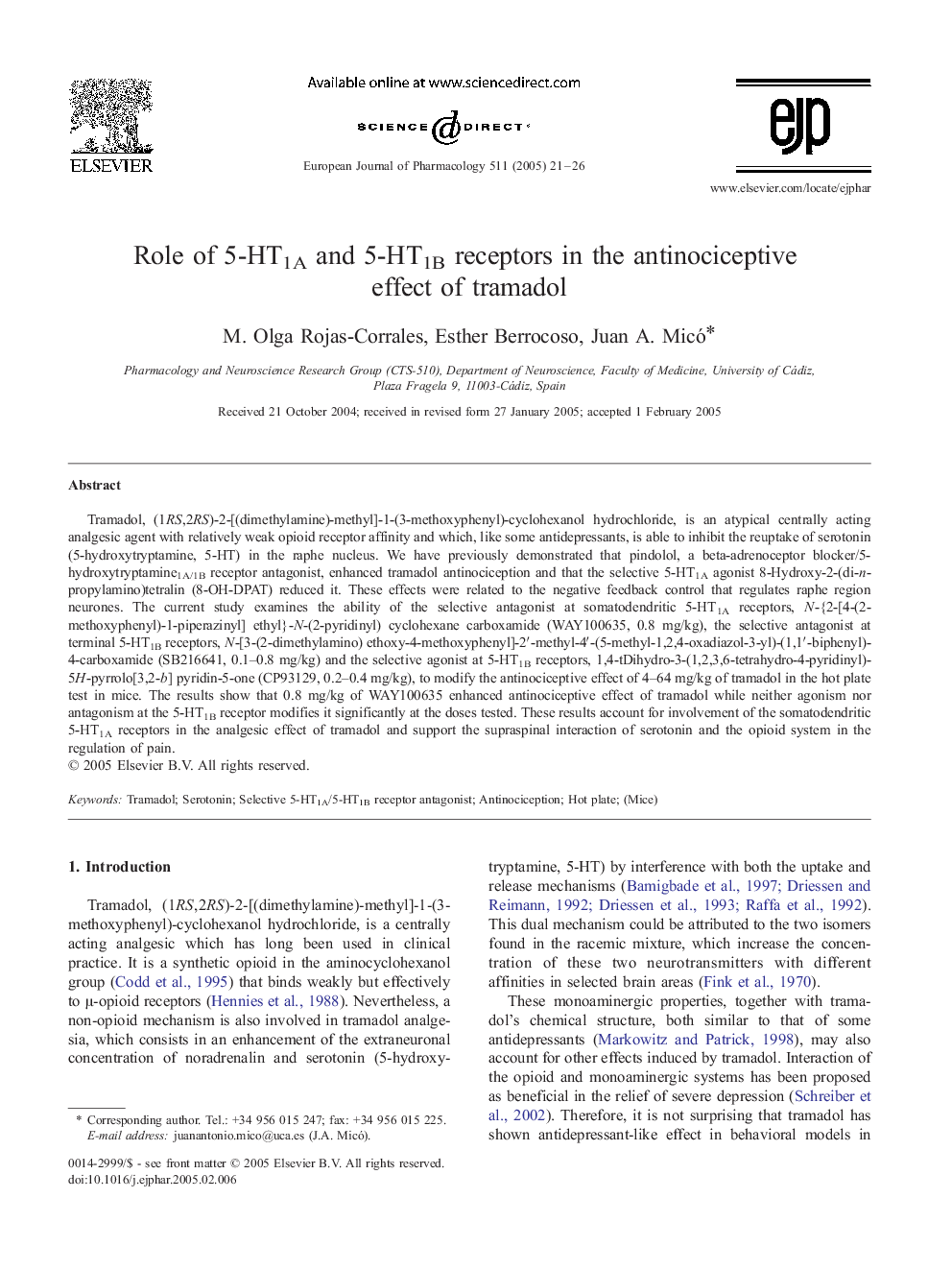| Article ID | Journal | Published Year | Pages | File Type |
|---|---|---|---|---|
| 9921442 | European Journal of Pharmacology | 2005 | 6 Pages |
Abstract
Tramadol, (1RS,2RS)-2-[(dimethylamine)-methyl]-1-(3-methoxyphenyl)-cyclohexanol hydrochloride, is an atypical centrally acting analgesic agent with relatively weak opioid receptor affinity and which, like some antidepressants, is able to inhibit the reuptake of serotonin (5-hydroxytryptamine, 5-HT) in the raphe nucleus. We have previously demonstrated that pindolol, a beta-adrenoceptor blocker/5-hydroxytryptamine1A/1B receptor antagonist, enhanced tramadol antinociception and that the selective 5-HT1A agonist 8-Hydroxy-2-(di-n-propylamino)tetralin (8-OH-DPAT) reduced it. These effects were related to the negative feedback control that regulates raphe region neurones. The current study examines the ability of the selective antagonist at somatodendritic 5-HT1A receptors, N-{2-[4-(2-methoxyphenyl)-1-piperazinyl] ethyl}-N-(2-pyridinyl) cyclohexane carboxamide (WAY100635, 0.8 mg/kg), the selective antagonist at terminal 5-HT1B receptors, N-[3-(2-dimethylamino) ethoxy-4-methoxyphenyl]-2â²-methyl-4â²-(5-methyl-1,2,4-oxadiazol-3-yl)-(1,1â²-biphenyl)-4-carboxamide (SB216641, 0.1-0.8 mg/kg) and the selective agonist at 5-HT1B receptors, 1,4-tDihydro-3-(1,2,3,6-tetrahydro-4-pyridinyl)-5H-pyrrolo[3,2-b] pyridin-5-one (CP93129, 0.2-0.4 mg/kg), to modify the antinociceptive effect of 4-64 mg/kg of tramadol in the hot plate test in mice. The results show that 0.8 mg/kg of WAY100635 enhanced antinociceptive effect of tramadol while neither agonism nor antagonism at the 5-HT1B receptor modifies it significantly at the doses tested. These results account for involvement of the somatodendritic 5-HT1A receptors in the analgesic effect of tramadol and support the supraspinal interaction of serotonin and the opioid system in the regulation of pain.
Related Topics
Life Sciences
Neuroscience
Cellular and Molecular Neuroscience
Authors
M. Olga Rojas-Corrales, Esther Berrocoso, Juan A. Micó,
